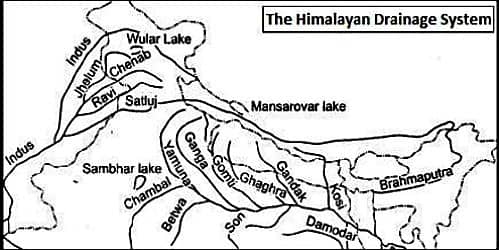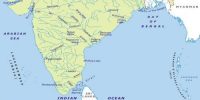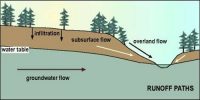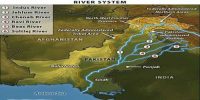Evolution of the Himalayan Drainage System
The flow of water through well-defined channels is known as drainage and the network of such channels is known as a drainage system. The Himalayan drainage system has evolved through a long geological history. It mainly includes the Ganga, the Indus, and the Brahmaputra river basins.
The Himalayan drainage system has evolved throughout a lengthy geological narration. The three major Himalayan Rivers are the Indus, the Ganga, and the Brahmaputra. There are differences of estimation about the evolution of the Himalayan Rivers. These rivers are long and are connected by many tributaries. The river came into being due to earth movements which took place in the Tertiary era and is thought to be descendant of the Himalayan Sea. Rivers along with its tributaries form a river system. Let’s study each river and its tributaries. In the Eocene Epoch, a gulf extended from Sind to Afghanistan and from there extended eastward and south-eastward through Kohat and Punjab to the neighborhood of Nainital. This gulf gave place to a great river.
There are differences of opinion about the evolution of the Himalayan Rivers. However, geologists believe that a mighty river called Shiwalik or Indo-Brahma traversed the entire longitudinal extent of the Himalaya from Assam to Punjab and onwards to Sind, and finally discharged into the Gulf of Sind near lower Punjab during the Miocene period some 5-24 million years ago. The remarkable continuity of the Shiwalik and its lacustrine origin and alluvial deposits consisting of sands, silt, clay, boulders, and conglomerates support this viewpoint. It is opined that in due course of time Indo-Brahma river was dismembered into three main drainage systems:
(i) the Indus and its five tributaries in the western part;
(ii) the Ganga and its Himalayan tributaries in the central part; and
(iii) the stretch of the Brahmaputra in Assam and its Himalayan tributaries in the eastern part.
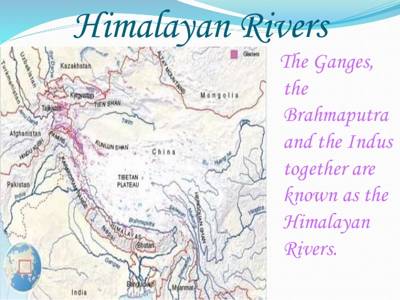
Evolution of Himalayan Drainage system:
- There was an impressive river called Shiwalik or Indo-Brahma traversed the whole longitudinal extent of the Himalaya from Assam to Punjab and onwards to Sind, and lastly discharged into the Gulf of Sind near lower Punjab throughout the Miocene stage a few million years ago.
- The notable stability of the Shiwalik and its lacustrine origin and alluvial deposits consisting of sands, silt, clay, boulders, and conglomerates maintain this perspective.
- Himalayan rivers afterward got dismembered into three major systems.
- This dismembered was possibly due to the Pleistocene upheaval in the western Himalayas, including the uplift of the Potwar Plateau (Delhi Ridge), which acted as the water divide between the Indus and Ganga drainage systems.
- Similarly, the down-thrusting of the Malda gap area between the Rajmahal hills and the Meghalaya plateau during the mid-Pleistocene era diverted the Ganga and the Brahmaputra systems to flow towards the Bay of Bengal.
The dismemberment was probably due to the Pleistocene upheaval in the western Himalayas, including the uplift of the Potwar Plateau (Delhi Ridge), which acted as the water divide between the Indus and Ganga drainage systems. Likewise, the down-thrusting of the Malda gap area between the Rajmahal hills and the Meghalaya plateau during the mid-Pleistocene period. diverted the Ganga and the Brahmaputra syslcins to How towards the Bay of Bengal.
